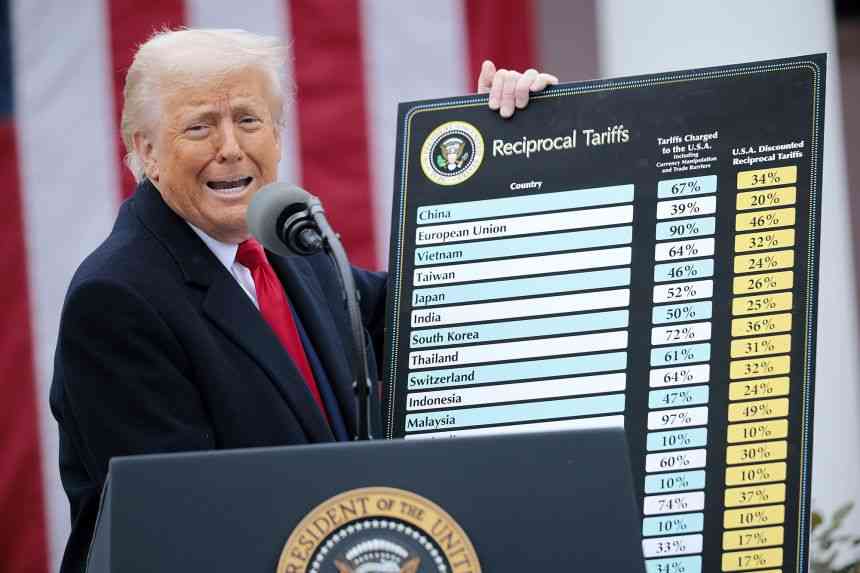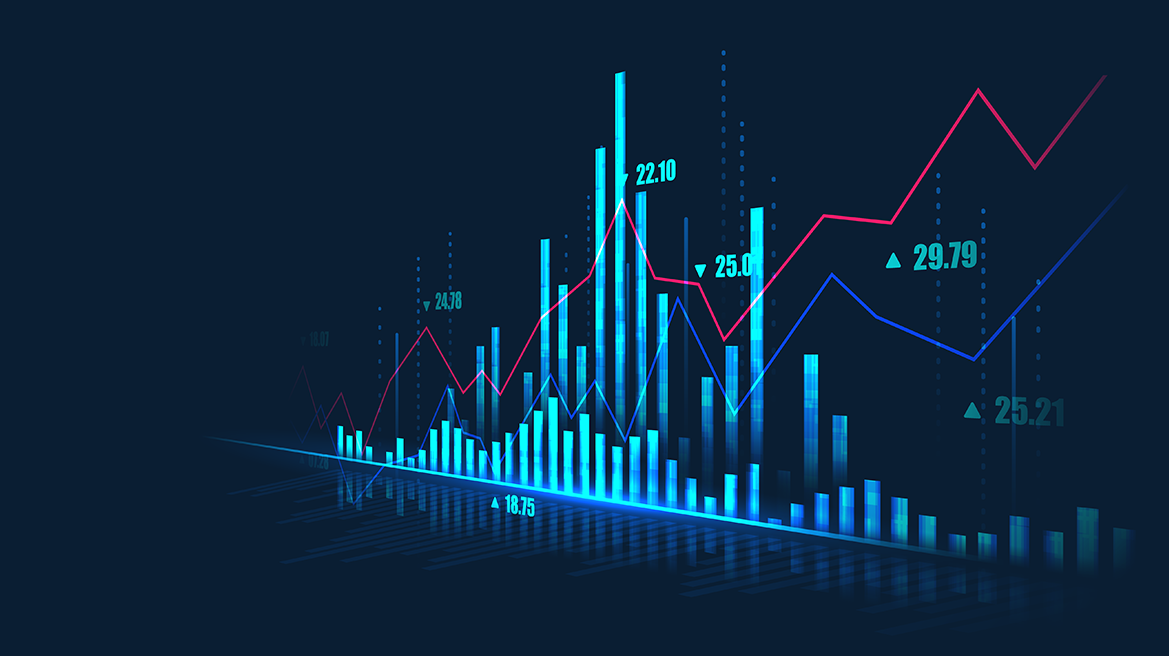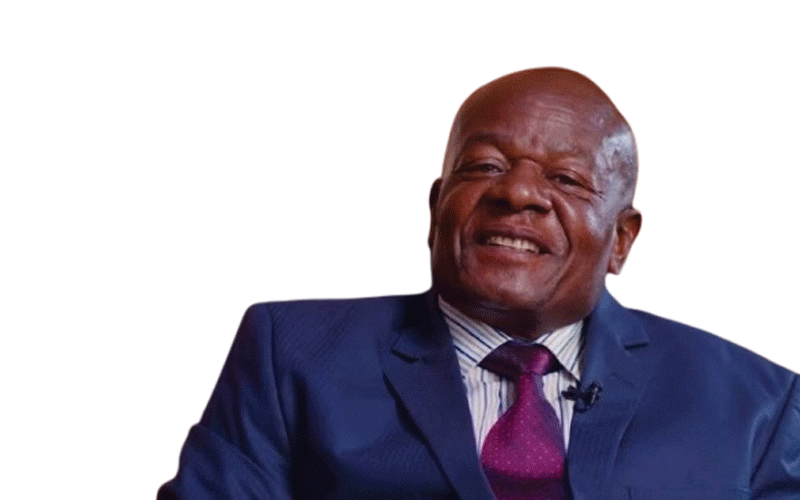
This past week delivered one of the wildest rides global markets have seen all year.
A single announcement from President Donald Trump—his plan to impose 100% tariffs on select Chinese goods—sent shockwaves across the financial world.
Within hours, stock markets tumbled, traders scrambled to unwind leveraged positions, and billions of dollars vanished from the S&P 500’s market capitalisation.
For many, it was a harsh reminder: In markets, headlines can move prices faster than fundamentals ever will.
But while panic spread, experienced investors and traders took a deep breath. Moments like this are not new—they’re tests of discipline, risk management, and emotional control.
So, let’s unpack what happened, what it means for you, and the key lessons we can all take away. Remember, nothing in this article is supposed to be taken as financial advice as I write for educational purposes only.
- Tariffs, tweets, and tumbling markets
It all began late Friday when Trump announced his intention to double tariffs on Chinese imports, retaliating against Beijing’s restriction on rare earth mineral exports—materials crucial for technology and manufacturing industries.
The reaction was instant.
- Letter from America: Is former president Donald Trump a hero or villain?
- Chidzivo, Tarakinyu clinch Kabag honours
- Letter from America: Is former president Donald Trump a hero or villain?
- The Fiddler: Is honesty the best policy?
Keep Reading
The S&P 500 plunged 2.7%, its worst single-day drop since April.
Tech giants like Nvidia, Apple, and Tesla led the selloff, and major Chinese firms such as Alibaba and JD.com saw sharp declines.
In total, over US$2.5 trillion in market value evaporated in just a few hours.
Panic spread across asset classes. In crypto markets, over US$19 billion in leveraged positions were liquidated, leaving more than a million traders wiped out overnight.
Yet, as the dust settled, analysts noted something important: the panic might have been overblown.
According to The Kobeissi Letter, a respected market research outlet, China’s export restrictions weren’t a full ban.
And Trump’s 100% tariff declaration? More of a negotiating tactic than a guaranteed policy shift.
The next day, Beijing clarified that approved companies could continue exporting certain materials—an early sign that both sides were still open to dialogue.
This small clarification highlights a timeless truth about markets: headlines drive emotion, but fundamentals drive value.
- The bigger picture: Fundamentals over fear
In volatile times like this, it’s easy to lose sight of what matters. But every seasoned investor knows that company fundamentals—earnings, debt levels, business models—are what ultimately determine long-term value.
When fear spikes, leverage gets punished the hardest. Friday’s events proved that again.
Traders using borrowed money saw their accounts liquidated faster than they could react.
Those who managed risk and kept positions sized properly weathered the storm.
So what’s the takeaway?You can’t control the headlines—but you can control your exposure.
Here are a few golden rules:
Diversify: Don’t put all your money in one sector or asset.
Stay liquid: Keep cash ready to act when others panic.
Avoid over-leverage: Margin can amplify gains, but it destroys accounts in volatility.
Risk management isn’t exciting, but it’s what separates survivors from speculators.
- Lessons from market turbulence
A phrase making waves lately is the “Taco Trade”—the idea of taking profits early and rotating into new opportunities rather than riding every wave to the top (or bottom).
It’s a mindset shift:
Don’t marry your trades.
Take your profits, reassess, and move on.
Stay flexible as new information hits the market.
That’s especially true now. Markets are unpredictable, policy headlines change daily, and algorithms react faster than humans ever could. The smart play is to focus on preparation, not prediction.
For beginner traders, that means:
Having a watchlist of quality companies you believe in.
Tracking them, not chasing trends.
Using volatility as an opportunity to buy at discounts, not as a trigger to panic sell.
- Gold: The veteran safe haven
One clear winner in all this chaos? Gold.
In 2025, gold has broken record after record, smashing through the $4 000 per ounce barrier. Central banks across the world—faced with debt, inflation, and geopolitical uncertainty—are buying gold at historic rates.
Why?
Because gold doesn’t depend on any one government, company, or promise. It’s insurance.
Traditionally, when markets fell, investors ran to the US dollar. But this time, we’re seeing something different: the global pivot toward tangible, inflation-resistant assets like gold. It’s not about fear—it’s about hedging intelligently.
So, while stocks and crypto remain volatile, a portion of long-term portfolios in gold (or similar safe-haven assets) can offer stability when everything else swings wildly.
- Key takeaways and practical risk management
Let’s recap some key lessons from this week’s turbulence:
-Keep your personal “watchlist” of strong, well-run companies. When fear strikes, you’ll know what’s worth buying at a discount.
-Take profits when your targets hit. Don’t get greedy—markets reward discipline, not emotion.
-Respect leverage. Only use it when you can afford to be wrong.
-Diversify beyond equities. Gold and other hard assets are gaining new relevance.
-Stay cash-ready. Optionality is power. Having liquidity means you can buy opportunity when others are selling fear.
These are timeless strategies that separate sustainable investors from short-lived speculators.
- The macro view: What’s next?
It’s extremely hard to predict the future, but my view is that the tension between the US and China isn’t going away. Each new policy statement shakes global confidence and sparks volatility across equities, crypto, and commodities.
For Zimbabwean traders and global retail investors alike, the lesson is the same: Stay informed, but don’t let the news dictate your emotions.
Headlines are noise—your process is what matters.
Instead of trying to guess the next move, focus on:
-Identifying undervalued assets.
-Protecting your downside.
-Acting decisively when opportunity appears.
The markets will always test your patience, but the disciplined investor views volatility not as chaos—but as potential.
- Final thoughts: Education is your edge
Every trader starts somewhere, and the most powerful advantage you can develop is knowledge.
If you want to go deeper into these market insights—understanding macro trends, trading psychology, and portfolio strategy—check out my website www.streetwiseeconomics.com and subscribe to the Streetwise Economics YouTube channel here: https://tinyurl.com/5ydrzdxb.
I share actionable lessons, market breakdowns, and practical guidance designed for traders and investors at every level.
Remember, volatility is not your enemy—it’s your training ground.
Until next time, trade and invest wisely… and may the markets be with you.
*Isaac Jonas is an economist based in Canada and principal consultant at Streetwise Economics. He is also a retail investor, retail trader and content creator, focusing mainly on the US and Canadian capital markets. He regularly shares insights via his social media handles and YouTube Channel (Streetwise Economics). His website is www.streetwiseeconomics.com and can be reachable on [email protected]. Disclaimer: This article is for educational purposes only—not investment advice. Markets are personal; what works for me might not for you. Consult a financial advisor before acting. Let’s keep learning and adapting—together.











